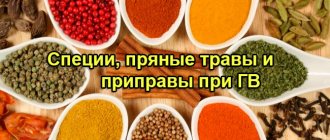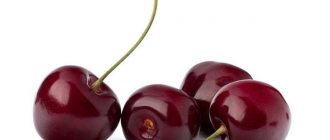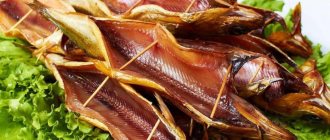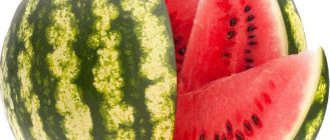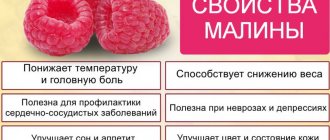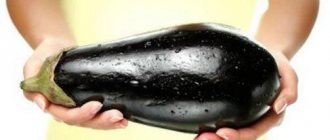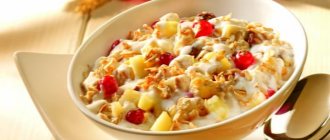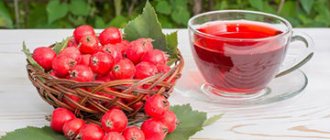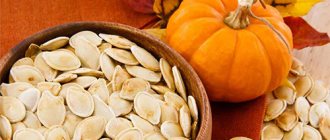Pediatricians say that pumpkin will be very helpful during breastfeeding, and side effects in mother or baby are quite rare. A woman should eat this healthy product during pregnancy to restore and replenish the vitamin balance. You will learn how to correctly introduce pumpkin into the menu and what is best to cook from it in our article.
With the arrival of a baby in the family, a nursing mother has many questions related to diet. A properly designed menu will help a woman recover faster after childbirth, and the child will get as many useful substances as possible from mother’s milk.
What are the benefits of pumpkin for mothers and babies?
The effect of a vegetable on the body is determined by its biochemical composition. When deciding for yourself whether pumpkin can be breastfed, you should take into account its effects, the presence of contraindications, and the individual characteristics of the organisms of a nursing woman and baby. In general, this is an extremely useful product, widely used in culinary recipes, folk medicine and cosmetology.
Table 1. Biochemical composition of pulp
| Substance | Contents per 100 g of raw vegetable | Percentage of the norm for an adult, % |
| Proteins, g | 1,0 | 1,2 |
| Fats, g | 0,1 | 0,15 |
| Carbohydrates, g | 4,4 | 3,4 |
| Energy value, kcal | 22,0 | 1,5 |
| Dietary fiber, g | 2,0 | 10,0 |
| Organic acids, g | 0,1 | – |
| Vitamin A, mcg | 250,0 | 27,8 |
| β-carotene, mg | 1,5 | 30,0 |
| Vitamin B1, mg | 0,05 | 3,3 |
| Vitamin B2, mg | 0,06 | 3,3 |
| Vitamin B5, mg | 0,4 | 8,0 |
| Vitamin B6, mg | 0,13 | 6,5 |
| Vitamin B9, mcg | 14,0 | 3,5 |
| Vitamin C, mg | 8,0 | 8,9 |
| Vitamin E, mg | 0,4 | 2,7 |
| Vitamin PP, mg | 0,7 | 3,5 |
| Iron, mg | 0,4 | 2,2 |
| Iodine, mcg | 1,0 | 0,7 |
| Potassium, mg | 204,0 | 8,2 |
| Calcium, mg | 25,0 | 2,5 |
| Cobalt, µg | 1,0 | 10,0 |
| Magnesium, mg | 14,0 | 3,5 |
| Manganese, mg | 0,04 | 2,0 |
| Copper, µg | 180,0 | 18,0 |
| Sodium, mg | 4,0 | 0,3 |
| Sulfur, mg | 18,0 | 1,8 |
| Phosphorus, mg | 25,0 | 3,1 |
| Fluorine, mcg | 86,0 | 2,2 |
| Chlorine, mg | 19,0 | 0,8 |
| Zinc, mg | 0,24 | 2,0 |
The high content of useful components explains the benefits of pumpkin during breastfeeding:
- improvement of metabolism, vision, immunity;
- normalization of water-salt metabolism, gastrointestinal tract function, sleep;
- decreased blood pressure, increased acidity of gastric juice;
- strengthening the walls of blood vessels;
- purgation;
- reduction of edema, removal of excess fluid from the body;
- cell renewal, accelerating the regeneration of damaged tissues.
On a note! Not only the pulp of the vegetable is valuable, but also the juice, seeds and pumpkin oil obtained from them.
When can pumpkin be included in the menu?
Pumpkin during breastfeeding is an excellent and irreplaceable addition to a mother’s menu. Use begins 10 days after the birth of the child. It’s not possible before, since the baby’s gastrointestinal tract is just beginning to adapt to independent digestion. And it is known to cleanse the body well.
Thanks to pectin, pumpkin dishes will benefit digestion, strengthen the heart muscle, and have a beneficial effect on the nervous system. Therefore, you can start preparing different pumpkin dishes in the first month after birth.
Harm of pumpkin during breastfeeding
During lactation, the use of the product by a nursing woman in the permitted dosage and form, in the absence of contraindications, cannot cause harm to her or the baby. The pulp has a characteristic bright orange color, its intensity depends on the carotene content. During the newborn period (up to the 28th day of life), it is advisable to completely exclude such products from the mother’s diet, no matter how healthy they may be. The child’s gastrointestinal tract must be given the opportunity to adapt to a new type of nutrition.
Excessive consumption of pumpkin during natural feeding can cause carotenemia due to the high concentration of carotenes. Symptoms may appear in the mother or child in the form of yellowing of the skin and eyes. Signs of the disease will completely disappear after eliminating the product from the menu.
Attention! Pumpkin is a little weaker, which has a beneficial effect if you are prone to constipation, but if the baby has diarrhea, then eating the vegetable by a nursing woman will aggravate the problem.
Contraindications
With natural feeding, almost everyone can eat pumpkin. An exception is a situation in which a nursing woman or infant has at least one contraindication:
- product intolerance;
- allergic reaction;
- stomach ulcer, duodenal ulcer;
- gastritis with low acidity;
- severe form of diabetes.
Pumpkin has a number of contraindications for consumption
Contraindications
Pumpkin is healthy for people of all ages; there are few restrictions on its use, so for those who have not yet tried to diversify their menu with this vegetable during pregnancy and lactation, we strongly recommend doing so. If you or the child’s father are allergic to carotenes, Before eating pumpkin, you can get your baby tested for allergens, since pumpkin contains carotenes in large quantities. This type of allergy is extremely rare.
When discussing the topic of whether it is possible to eat pumpkin during breastfeeding, one must also take into account the fact that it has some contraindications. You should not eat dishes from this vegetable if:
- individual intolerance of the child or mother;
- exacerbations of gastric ulcer;
- exacerbations of duodenal ulcers;
- with severe diabetes mellitus.
In all other cases, pumpkin is absolutely safe for both mother and baby.
In addition to the listed restrictions, pumpkin dishes are prohibited for women who have been diagnosed with certain pathologies:
- decreased stomach acidity;
- liver diseases;
- pancreatic diseases;
- inflammatory processes in the gastrointestinal tract;
- diarrhea.
Eating pumpkin dishes can cause an exacerbation of these diseases.
Pumpkin juice – is it possible and what are the benefits?
The freshly squeezed drink contains the same active substances as pumpkin itself. Along with the pulp, some of the ballast substances that cleanse the intestinal walls are lost, but the juice still has a mild laxative effect. Otherwise, the beneficial properties and characteristics are identical to consuming fresh vegetables.
When breastfeeding, choosing pumpkin juice instead of pulp should be used by those who want to get the maximum benefits, but cannot eat the fruit without heat treatment. The taste of the drink is very specific, so it is recommended to add freshly squeezed apple and carrot juices. It is advisable to do without sugar, so as not to cause colic in the baby; it is better to prepare a drink from fully ripened sweet fruits.
On a note! The juice should be drunk fresh, with the addition of water or other ingredients. Heat treatment will reduce the amount of beneficial nutrients.
Useful properties of the drink
– Normalizes cholesterol levels in the blood;
– Strengthens the heart and blood vessels;
– Increases immunity and defenses of the body;
– Stimulate the functioning of digestion and intestines, improve the absorption of nutrients;
– Cleanses the body, removes toxins and pesticides, heavy metals, toxins and other harmful substances;
– Tones and invigorates, improves mood and gives energy;
– Gently calms nerve cells, fights stress and fatigue;
– Improves and strengthens sleep;
– Improves the condition of skin and hair, gives a healthy and beautiful appearance;
– Restores the skin, heals wounds and inflammation;
– Eliminates heartburn and constipation, vomiting and nausea, stabilizes the level of stomach acidity;
– Has a mild diuretic and laxative effect;
– Strengthens bones and muscles, increases body tone;
– Improves blood circulation and blood composition;
– Establishes material metabolism, cleanses tissues and internal organs;
– Relieves fever, eliminates germs and inflammation;
– Stimulates brain and memory function;
– Increases lactation and reduces weight;
– Prevention of sclerosis, rickets and anemia.
Can I have pumpkin seeds?
Their chemical composition is very different from pumpkin. Calorie content is 559 kcal per 100 g. The main nutritional value is fats and proteins. Dietary fiber 6 g, not 2 g, as in pulp. Vitamins E, PP, group B are present in greater quantities, in addition B4 and K are added. The content of vitamins A and C is reduced. The mineral composition is also presented in higher concentrations compared to pulp.
On a note! When breastfeeding, pumpkin seeds are more preferable than sunflower seeds because they are less allergenic.
The product has the same properties as the vegetable, but in most cases they are more pronounced. Pumpkin seeds are a famous folk remedy against parasites because the green skin under the hard shell contains cucurbitin. For this purpose, it is recommended to consume them on an empty stomach in the amount of 1 glass, chew them thoroughly, and do not wash them down with water. Experts do not recommend conducting such experiments, especially during breastfeeding, but they do not deny the small therapeutic and preventive effect.
It is permissible for a nursing mother to eat no more than 35-80 g of pumpkin seeds per day. You can start after 2-3 months with small portions, provided that the baby is not allergic to the vegetable itself. It should be taken into account that indigestion, colic, bloating, and skin rash are possible. For this reason, it is not advisable to eat pumpkin seeds more than 3-4 times a week.
Pumpkin seeds are no less useful than the pumpkin itself
Experts' opinion
Doctors unanimously agree that mothers can eat pumpkin during pregnancy and lactation. An arsenal of vitamins and nutrients will support the health of the mother and her baby. Pediatricians recommend pumpkin for older children as complementary foods, but it is necessary to gradually introduce a new product into the diet and observe the child’s reaction to the product.
Doctors' opinions about when a nursing mother can start eating pumpkin after giving birth are different: some believe that the vegetable can be consumed a week after giving birth, others recommend waiting ten days or a month. Try to choose fruits with yellow-green or white rind rather than orange ones.
Rules for introducing and consuming pumpkin during breastfeeding
It is not recommended to eat pumpkin during the first month of breastfeeding. The immature digestive system of a newborn will not be able to cope with a large content of active substances, which can cause allergies in the future.
Following the recommendations will help to avoid the undesirable consequences of introducing vegetables into the diet during breastfeeding:
- You can try for the first time after 1-2 months of the baby’s life;
- The serving size should start with 1 tsp and increase gradually to 100 g;
- there should be only one new product, so that there is no doubt about what exactly the child’s body reacted negatively to;
- eat pumpkin boiled, stewed or baked, try adding fresh pumpkin to the menu later;
- carefully monitor the baby’s reaction, and in case of any side effects, remove it from the diet for 1-2 months;
- keep a food diary.
All the benefits of the product during lactation
The diet of a breastfeeding woman should include both fruits and vegetables. The full development of her child directly depends on what a mother eats. Pumpkin is considered an allowed product during breastfeeding, but has minor restrictions.
During lactation, it is advisable to consume vegetables with green peel. It is considered less allergenic than other types. Also, dishes from this melon culture are prohibited for women sensitive to carotene. It is contained in this vegetable and can cause an allergic reaction.
https://www.youtube.com/watch?v=Lqxk-Ie2vIA
And when your baby is born and grows up, you can prepare him delicious pumpkin porridge using these recipes.
Pumpkin should be included in the diet not only of the nursing woman, but also of the baby himself when the time comes. The vegetable is rich in vitamins, microelements and mineral components. It can be eaten by women who have gained extra pounds after childbirth. 100 g of product contains only 23 kcal.
The food product contains a lot of fiber, which can improve intestinal function, cope with constipation and remove excess fluid from the body.
Pumpkin is 90% water, so it helps with urinary tract diseases and has an anti-inflammatory effect.
The vegetable contains carotene, which can cause allergic reactions (rash, nausea, vomiting, swelling). Therefore, with caution, pumpkin is introduced into the menu during breastfeeding before the baby is one month old.
The benefits of pumpkin seeds, which contain a lot of fatty acids, protein, zinc and other microelements, are also known. They are able to strengthen the immune system, improve the functioning of the cardiac, vascular and nervous systems, and remove toxins from the body.
Pumpkin juice made from raw pulp will improve your health and energy. It normalizes the functioning of internal organs, improves blood clotting, and strengthens blood vessels. But the raw product should be consumed with extreme caution, especially in the first month. If pumpkin juice is heat-treated during the preparation process, some of the vitamins decompose.
How to choose a pumpkin?
The vegetable must be whole, without mechanical damage or signs of disease. The bright color indicates a high carotene content, which can cause allergies in the baby during natural feeding, so for the first month of using the product it is better to choose a less pronounced color of the pulp. Large fruits are more fibrous and tough, so it is advisable to use small and medium-sized pumpkins for cooking for 6-7 months. They are less likely to cause colic in babies, and they are also sweeter, which will allow you to add less sugar to the dish.
The skin should be hard, with a clearly visible pattern and straight stripes characteristic of the vegetable. The last parameter is especially important, since broken lines or bends are a possible sign of increased nitrite and nitrate content. If you lightly tap the surface, you should hear a dull sound. An unripe fruit can be identified by its peel, which can be easily pressed with a fingernail.
On a note! When breastfeeding, you need to be careful about the quality of the product and choose only fresh, ripened, whole fruits.
What can you cook
During breastfeeding, it is advisable to consume pumpkin in boiled, baked, stewed form, as well as in soups or purees.
This is not only a healthy vegetable, but also very tasty, so there are many recipes that nursing mothers will like.
- Pumpkin porridge with rice is easy to prepare. To do this, peel the vegetable, cut into pieces and cook over low heat for about 20 minutes until soft, and grind with a blender until smooth. Separately, boil the rice until half cooked. Mix pumpkin with rice, add milk and sugar to taste. The porridge should simmer for another 5 minutes over low heat.
- You can also bake pumpkin with apples and honey in a pot. To do this, cut the peeled pumpkin and apples into small cubes, put them in a pot, add honey and you can sprinkle with cinnamon. In 20 minutes, a healthy, appetizing dish will delight you with its aroma and excellent taste.
- Candied pumpkin. Peel the pumpkin, cut it into slices, sprinkle with sugar and bake at 200°C until cooked.
- Baked pumpkin with meat
- Peel onions and carrots;
- Rinse the meat (pork or beef will do);
- Chop the onion and fry it together with the meat in vegetable oil;
- Add chopped carrots, salt to taste, a pinch of coriander and 2 tbsp. tomato paste;
- Wash the pumpkin, cut off the top, remove the seeds and put the prepared filling inside. Cover the top with the cut top, grease the entire surface with vegetable oil and wrap the vegetable in foil. Bake at 180C for an hour.
Pumpkin recipes for nursing mothers
The vegetable can be used to prepare many delicious dishes; it is versatile and goes well with various food ingredients. When choosing a recipe, you need to carefully select other ingredients; they should not cause digestive upset or allergic reactions in the baby. When breastfeeding, preference is given to boiled, baked and stewed pumpkin dishes. Ground pepper and other spices can be added in small quantities after permission from the pediatrician.
Pumpkin casserole
Components:
- fresh pumpkin – 400 g
- rice – 110 g
- eggs – 3 pcs.
- granulated sugar – 100 g
- butter – 5 tbsp. l.
- vanillin, salt - to taste
Cooking method:
- Cook the rice, peel the pumpkin from the skin and seeds, and grate it coarsely.
- Add 3 tbsp to sugar. l. oils, yolks, vanillin, pumpkin and rice, mix thoroughly.
- Beat the whites with salt and add to the resulting mixture.
- Grease the mold with oil and pour in the mixture. The remaining 2 tbsp. l. Spread the butter in small pieces over the surface.
- Bake for 40-50 minutes. at 200°C.
Manti
Dough:
- wheat flour – 1 kg
- water – 360 ml
- salt - to taste
Filling:
- prepared pumpkin – 900 g
- onion – 400 g
- butter, salt, pepper - to taste
Cooking method:
- Boil water with salt, cool slightly, pour the solution into the sifted flour, knead the dough to a dense consistency. Cover with a clean, dry cloth, leave for 20 minutes, then knead and set aside again for 20 minutes.
- The rested dough should become softer and more elastic. Roll it into a sausage, put it in a bag without air access, and leave for 10 minutes.
- Cut the pumpkin into 0.5 x 0.5 cm pieces, mix with chopped onion, salt and pepper. When breastfeeding, the last ingredient may not be added.
- Cut the butter into 1x1 cm cubes.
- Pinch off a piece of dough, roll into a sausage, cut into pieces 1-1.5 cm, roll into a circle.
- Place 2 tbsp in the middle. l. filling and cube of butter, form manti.
- Cook the finished products in a mantyshnitsa for 45 minutes.
Vegetable stew
Components:
- pumpkin – 600 g
- eggplant – 2 pcs.
- zucchini – 1 pc.
- onions – 1-2 pcs.
- sunflower oil – 6 tbsp. l.
- salt, pepper - to taste
Cooking method:
- Wash the eggplants, cut into cubes, add salt and set aside for 20 minutes. to remove bitterness, rinse.
- Wash the pumpkin, peel it, grate it on a coarse grater.
- Cut the prepared zucchini and onion into cubes.
- Fry the onion in vegetable oil in a heated cauldron, add pumpkin, simmer for 5 minutes, add eggplant and zucchini, salt, pepper, mix well.
- Simmer over low heat until the ingredients are fully cooked, with the lid closed.
Restrictions
This type of melon is a useful product for nursing mothers. But its use should be moderate. Excessive consumption of vegetables can lead to the development of carotenemia in a woman or child. In this case, the skin acquires a yellowish tint. This phenomenon is not life-threatening, but the mother will have to stop eating pumpkin for at least four weeks.
Also, you should not eat pumpkin in the first month of a child’s life. A newborn has not yet developed beneficial intestinal microflora, and eating pumpkin by a nursing mother can cause digestive upset.
Another reason why pumpkin dishes should not be included in the diet of a nursing mother in the first month after childbirth is the high likelihood of the baby developing allergic reactions.
